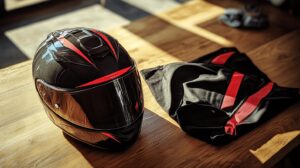Ever looked at your motorcycle helmet and thought it needed a touch of your unique style? Customizing your helmet is not only a way to stand out on the road but also enhances your riding experience by reflecting your personality.
Yet, while the idea is enticing, many are unsure where to start with the myriad of options and considerations involved. This article delves into the practical side of helmet customization, guiding you through the essential materials and tools, step-by-step techniques, creative design ideas, and how to maintain safety and legality, all while keeping an eye on costs.
Get ready to transform your helmet into a canvas that tells your story.
Essential Materials and Tools for Motorcycle Helmet Customization
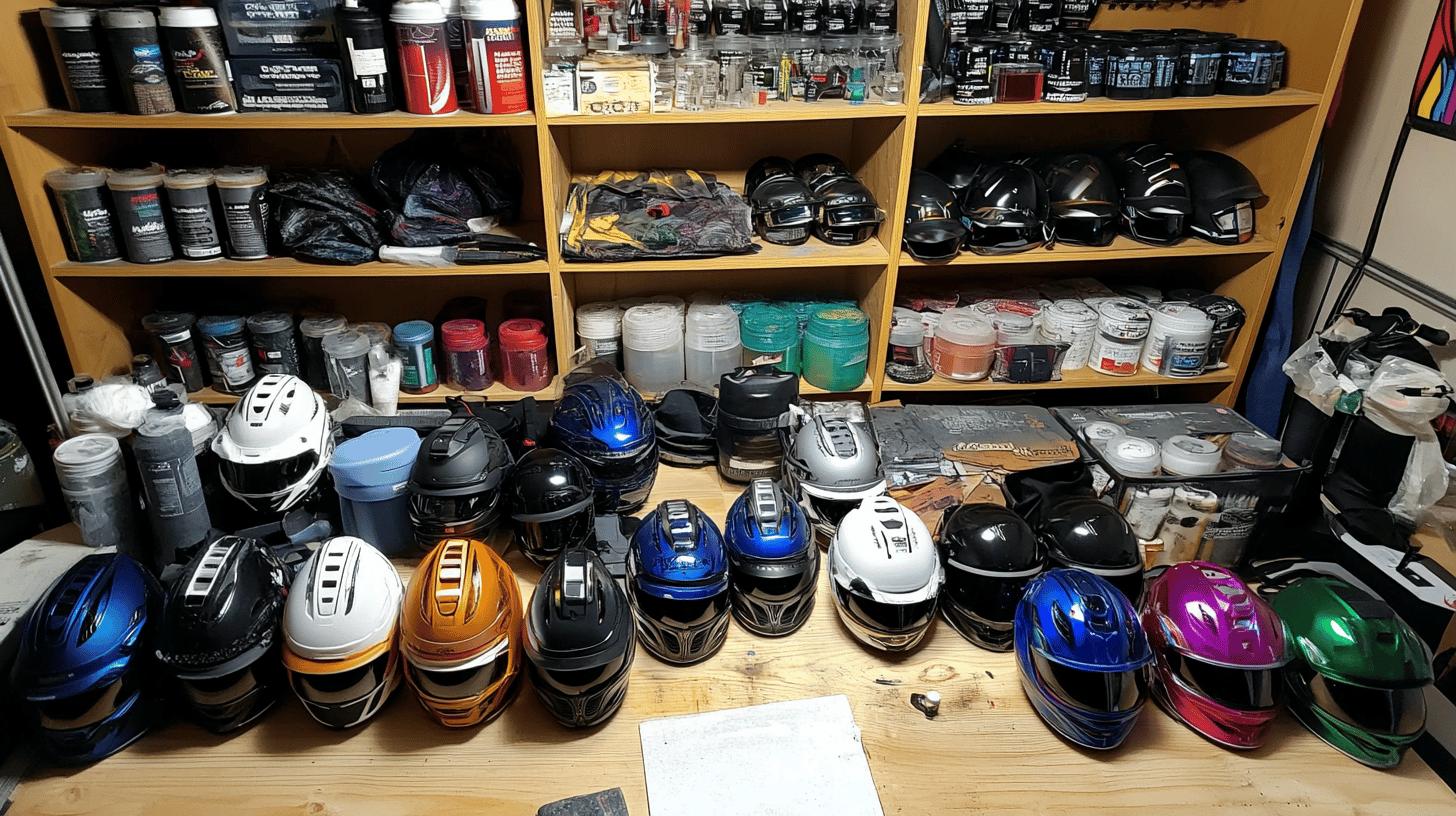
Choosing the right materials and tools is crucial for customizing a motorcycle helmet without compromising its safety features. Using helmet-safe materials ensures that the structural integrity of the helmet remains intact, which is essential for rider protection.
Specialized paints and decals designed for helmet surfaces are recommended, as these products are formulated to adhere properly without degrading the materials. These items not only enhance the helmet's appearance but also maintain its protective capabilities.
Selecting materials that are compatible with helmet surfaces is vital to avoid any damage or weakening of the helmet’s shell.
-
Specialized paints
-
Decals
-
Vinyl wraps
-
Airbrush kits
-
Protective gear
Tools play a significant role in the customization process by helping achieve the desired finish while ensuring the helmet's safety features are not compromised. Paintbrushes and airbrush kits allow for precision and creativity in applying designs.
Protective gear, such as gloves and masks, is essential to safeguard against fumes and direct contact with paints or adhesives. These tools not only facilitate the application of materials but also ensure that the customization process is safe for both the helmet and the person customizing it.
By using the correct tools, one can create a unique style that stands out while preserving the helmet’s protective qualities.
Step-by-Step Guide to Customizing Your Motorcycle Helmet
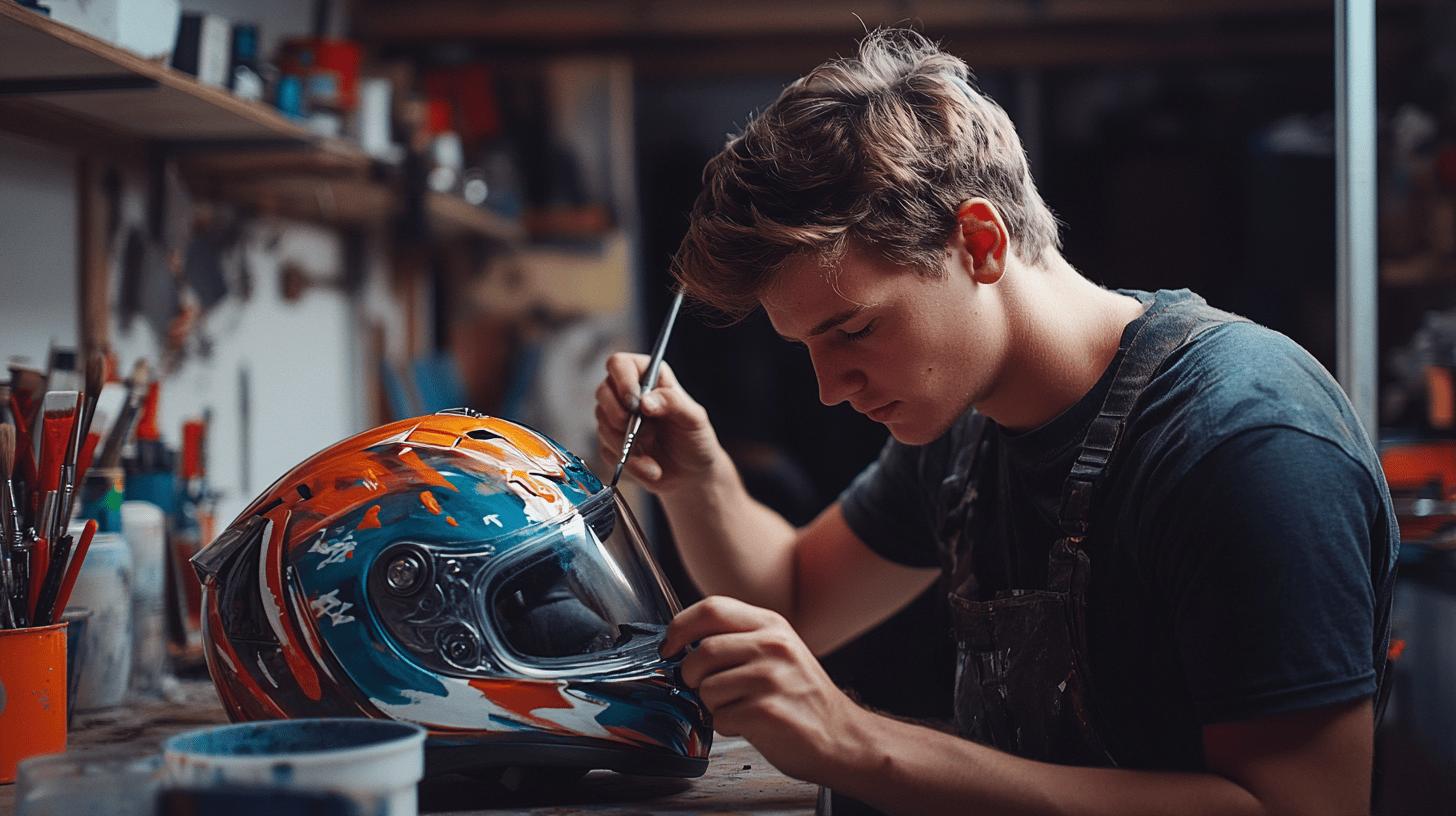
Before diving into the customization process, the key to a successful project is thorough preparation and planning. Begin by conceptualizing your design, considering elements like color schemes, patterns, and themes that reflect your unique style.
Gather all necessary materials, ensuring they are compatible with helmet surfaces to preserve its protective qualities. Essential materials include water-based acrylic paints, designed specifically for helmets, and a waterproof clear coat to seal your artwork.
Decals and other embellishments should also be selected with care, focusing on those that do not compromise helmet safety.
-
Cleaning: Start by thoroughly cleaning the helmet with a mild detergent to remove dirt, grease, and any residues. This ensures a smooth surface for paint and decals to adhere properly.
-
Priming: Apply a primer suitable for helmet surfaces. Priming creates a base layer that helps paint adhere more effectively and enhances color vibrancy.
-
Painting: Use water-based acrylic paint to apply your design. This type of paint is recommended because it minimizes the risk of damaging the helmet material. An airbrush can offer precision and smooth application for detailed designs.
-
Sealing: Once your design is complete and dry, apply a waterproof clear coat. This not only protects the paint from the elements but also enhances its durability.
-
Finishing Touches: Add decals or any additional embellishments. Make sure they are securely attached and do not interfere with any moving parts or visibility.
Maintaining safety during helmet customization is paramount. Always work in a well-ventilated area and use protective gear such as gloves and masks to avoid inhaling fumes.
Additionally, avoid altering the helmet's structure, as this can compromise its ability to protect during an impact. Ensuring that paint and materials are helmet-safe will help maintain its integrity.
Common mistakes in helmet customization include neglecting the importance of primer, which can lead to uneven paint application and color fading.
Another frequent error is using non-approved materials that may weaken the helmet shell or interfere with its aerodynamics. To prevent these issues, adhere strictly to using materials designed for helmets and follow the recommended application procedures.
Creative Design Ideas for Personalized Helmets

Finding the right inspiration is key to creating a custom helmet design that truly reflects one's personality. Riders can draw from a myriad of sources, such as personal hobbies, favorite art styles, or current fashion trends.
These elements can be translated into unique helmet graphics that set one's gear apart. For instance, a passion for nature might inspire a leafy or floral motif, while a penchant for retro aesthetics could lead to a vintage-style design.
Existing artwork or popular culture references are also excellent starting points, allowing for a blend of familiar visuals with personal flair. Stickers and decals provide an easy and non-permanent way to experiment with these ideas, allowing for flexibility and changeability without altering the helmet's structure.
-
Themed decals
-
Abstract patterns
-
Personalized logos
-
Reflective designs
-
Vintage styles
-
Minimalist looks
Integrating personal style into helmet designs involves more than just selecting a theme; it's about ensuring the final look feels authentic to the rider. One way to achieve this is by incorporating colors and symbols that hold personal significance.
For example, a motorcyclist who enjoys night riding might opt for reflective designs that not only enhance safety but align with their night-time theme. Alternatively, minimalist looks cater to those who prefer a sleek and subtle aesthetic, offering sophistication without overwhelming visuals.
Personalizing a helmet is an opportunity to express individuality while maintaining the functionality and safety of the gear. This balance between style and practicality ensures that the helmet remains a true extension of the rider's persona.
Ensuring Safety and Legality in Helmet Customization
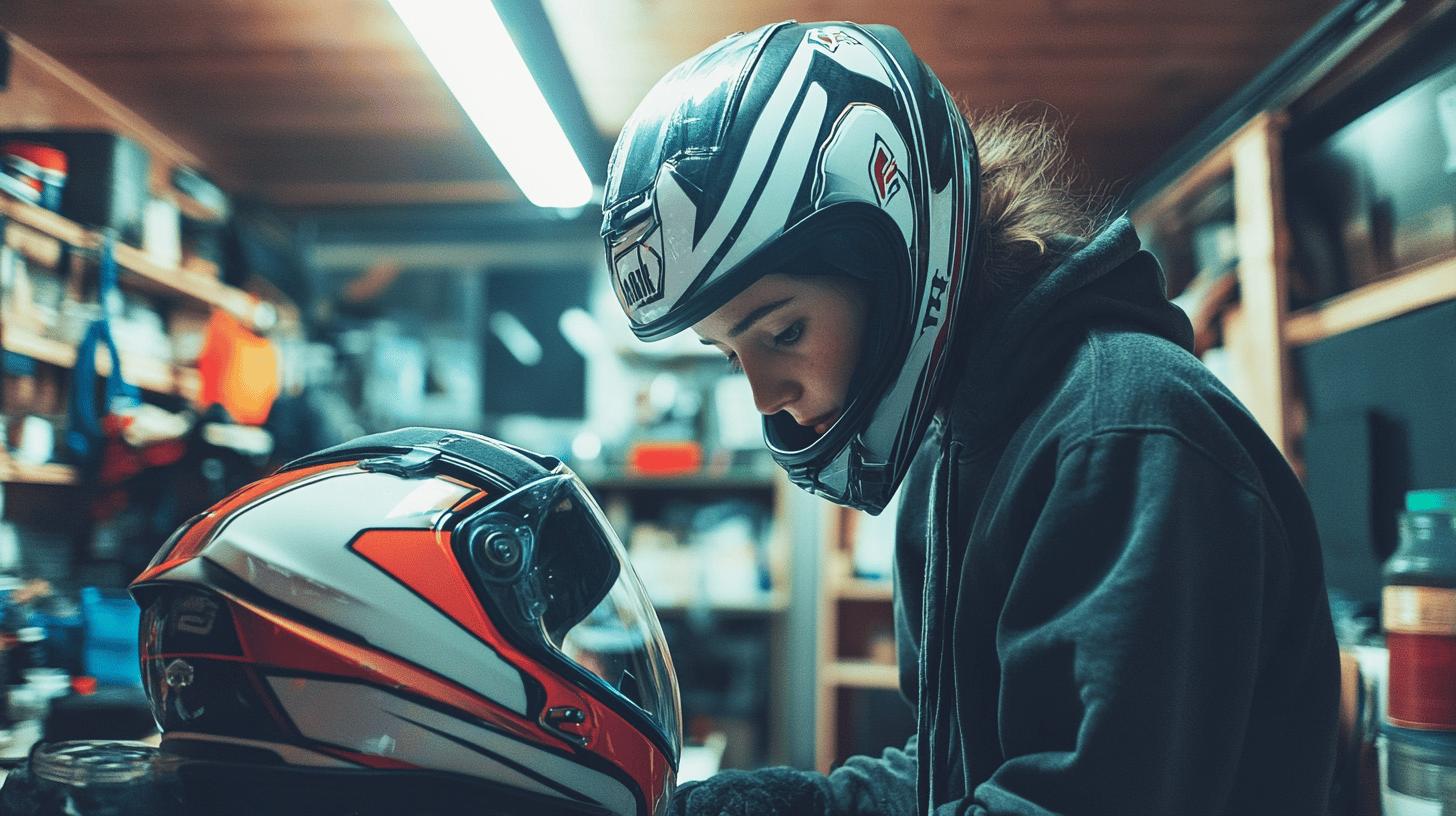
Preserving the protective features of a motorcycle helmet is paramount when considering customization. The primary function of a helmet is to protect the rider, and any modifications should never compromise this capability.
When customizing, ensure that the materials used do not weaken the helmet's shell or interfere with its structural integrity. This includes avoiding any paint or decals that might degrade the helmet's material or obstruct ventilation and visibility.
Keeping the helmet's protective features intact ensures it continues to offer the safety it is designed to provide during rides.
-
Use approved materials
-
Avoid structural alterations
-
Keep visibility clear
- Regularly inspect for damage
Understanding the legal aspects of helmet customization is equally important. While customizing helmets is generally legal, it's crucial to adhere to regional regulations that may dictate what modifications are permissible.
For instance, changes that obstruct the rider's vision or alter the helmet's safety certification can lead to legal issues. Before proceeding with any customization, it's advisable to consult local laws and guidelines to ensure compliance.
By doing so, riders can enjoy a personalized helmet without compromising its safety or legality, ensuring both style and protection on the road.
Cost Considerations for Customizing Motorcycle Helmets
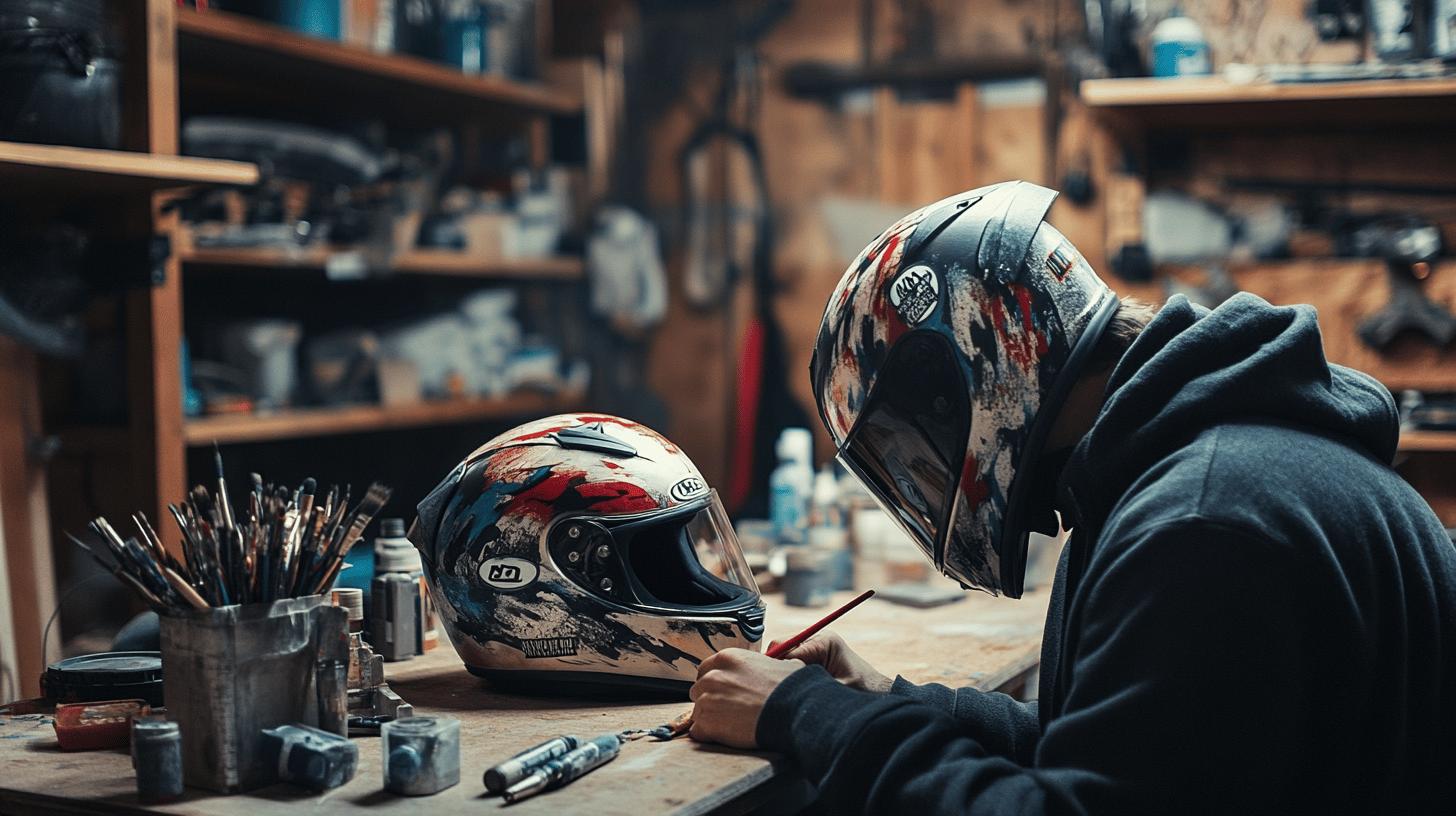
Customizing a motorcycle helmet can be an affordable endeavor, particularly for those who opt for DIY methods. Budget-friendly options such as decals and paint allow riders to personalize their helmets without breaking the bank.
Decals are available in various designs and can be easily applied for an instant style upgrade. Paint offers more creative freedom, enabling custom designs that reflect personal tastes. Both of these methods typically cost between $20 and $100, depending on the complexity and materials used.
This affordability makes them an attractive option for riders looking to add a unique touch to their gear without significant financial investment.
| Customization Type | Estimated Cost | Complexity Level |
|---|---|---|
| DIY | $20 – $100 | Simple to moderate |
| Mid-range | $100 – $500 | Moderate to complex |
| Professional | $500 – $1,000+ | Complex and detailed |
While DIY approaches are cost-effective, professional customization offers a level of detail and intricacy that may not be achievable at home. Professional services, though more expensive, provide high-quality finishes and customized designs tailored to individual preferences.
For riders seeking unique, complex patterns or intricate graphics, professional customization is a worthwhile consideration. Costs for professional services typically start at $500 and can exceed $1,000, depending on the design intricacy and materials used.
This investment can be justified by the exceptional craftsmanship and durable finishes that professionals provide, ensuring the helmet not only looks impressive but retains its protective features.
Exploring Innovative Tools and Technologies for Helmet Design
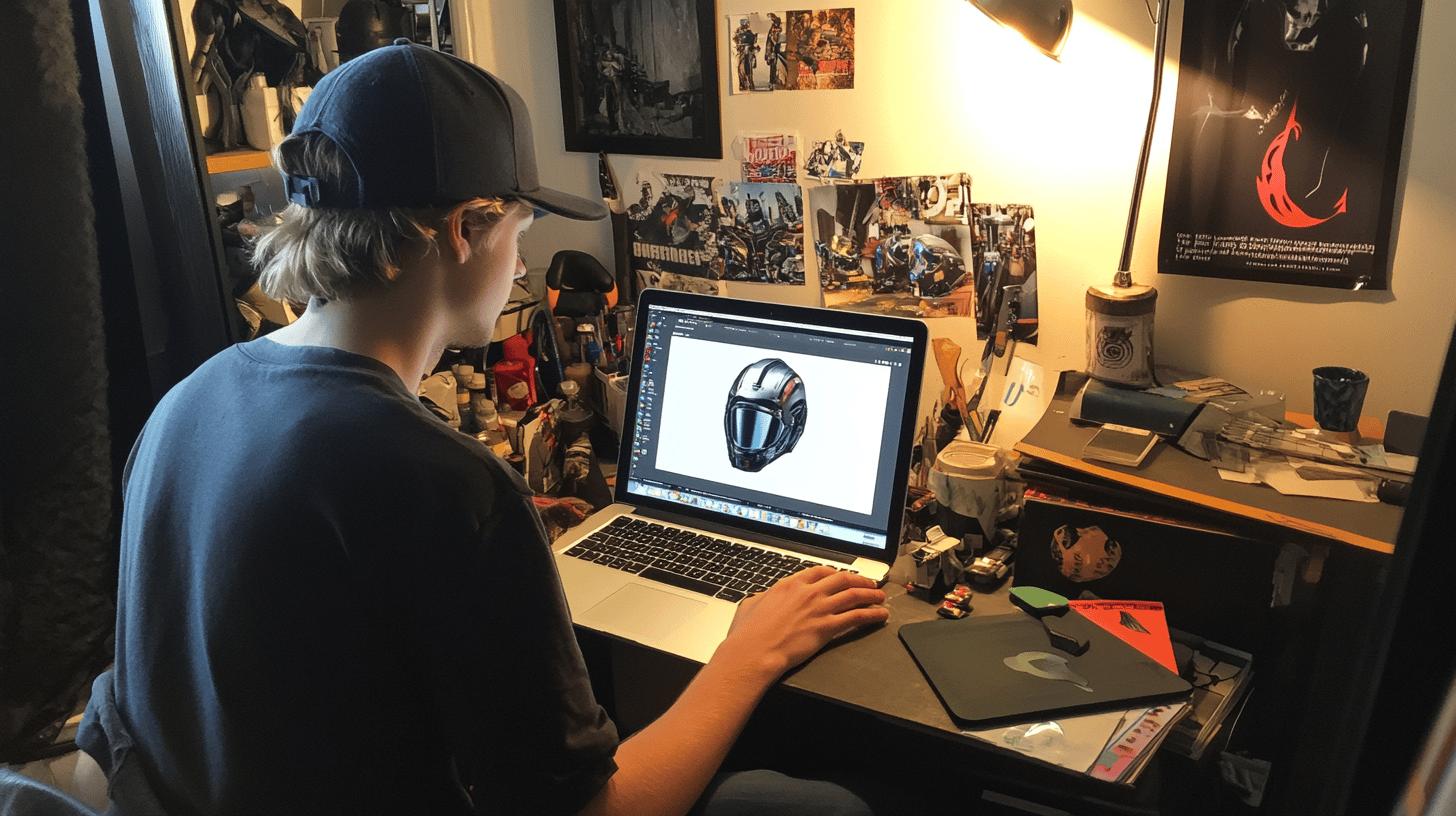
Digital tools have revolutionized the way motorcycle helmets are customized, offering enthusiasts a chance to create unique designs with precision. Helmet design software and online customizers provide platforms where users can experiment with various templates and features.
These tools allow for digital modeling of helmet designs, making it possible to visualize how different patterns, colors, and graphics will look before they are applied.
By using these technologies, riders can explore endless creative possibilities without the risk of making irreversible changes to their helmets.
The benefits of using technology in helmet customization are substantial. These digital solutions enable users to achieve intricate designs with a high degree of accuracy, ensuring that the end result aligns with their vision.
Customizers often include features such as color palettes, graphic overlays, and 3D modeling, which enhance creativity and allow for detailed adjustments. By providing a virtual canvas, these tools reduce trial and error, saving both time and materials.
As a result, riders can confidently craft a helmet that reflects their personal style while maintaining the helmet's safety and functionality.
Final Words
Exploring how to customize a motorcycle helmet involves understanding essential materials and tools, followed by a detailed step-by-step guide. Creative design ideas draw from personal interests, while safety and legality are crucial in customization.
Understanding cost considerations helps balance DIY and professional approaches. Embracing digital tools enriches the customization journey, offering precision and innovation.
Armed with this knowledge, riders can confidently create personalized helmets that reflect their unique style while ensuring safety and compliance with legal standards.
FAQ
Is it legal to customize your motorcycle helmet?
Customizing a motorcycle helmet is typically legal. However, modifications must not compromise the helmet's structural integrity or safety features. It's crucial to check your region's regulations to confirm compliance.
Can you make a custom motorcycle helmet?
Creating a custom motorcycle helmet involves using specialized paints, decals, and appropriate tools. The process requires careful application methods to preserve the helmet's safety functions while achieving personalized designs.
Can you modify a motorcycle helmet?
You can modify a motorcycle helmet using methods like painting or adding decals. It's vital to use materials that do not damage the helmet's protective capabilities and to follow safety guidelines during modification.
What is the best way to customize a helmet?
The best way to customize a helmet is to start with a clean and primed surface, use recommended materials like water-based acrylic paint, and finish with a waterproof clear coat. This ensures durability while maintaining safety.
How to customize a motorcycle helmet online?
Online customization involves using helmet design software or customizer websites. These platforms provide templates and tools to visualize and refine helmet designs before applying them to the actual helmet.
What tools and materials are essential for helmet customization?
Key materials include specialized paints, decals, vinyl wraps, and protective gear. Essential tools might involve paintbrushes and airbrush kits to help achieve precise finishes while maintaining helmet safety.

Ryan Thompson is a 35-year-old sport bike enthusiast known for his adventurous spirit. With years of weekend rides and exploring new roads, Ryan brings fresh insights and firsthand experience to ProtectiveGearz. His energetic approach and passion for the latest gear make him a trusted source for riders seeking up-to-date advice.
